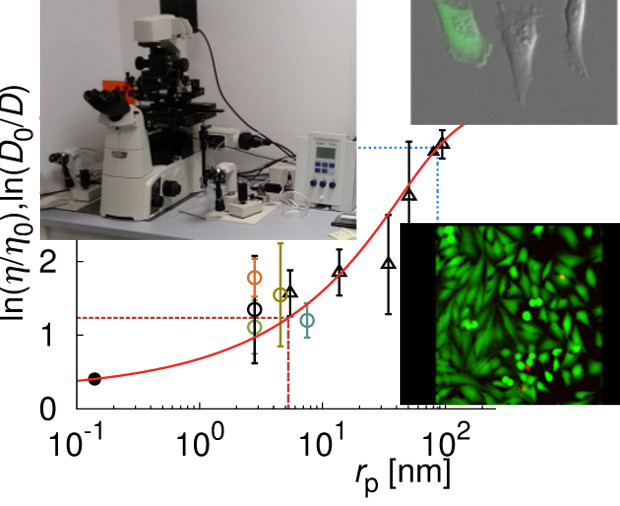

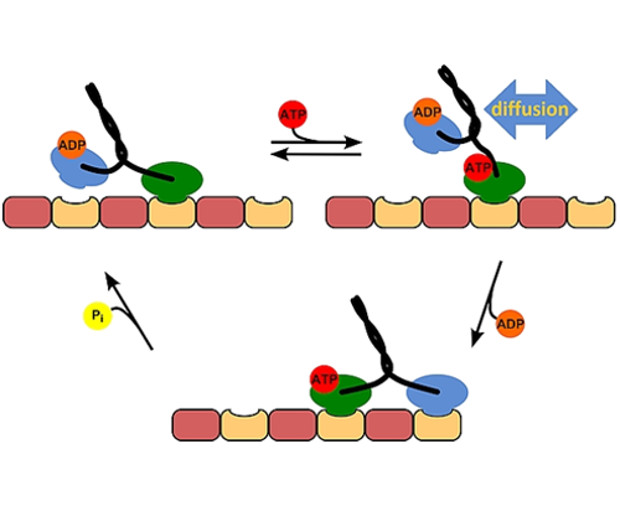
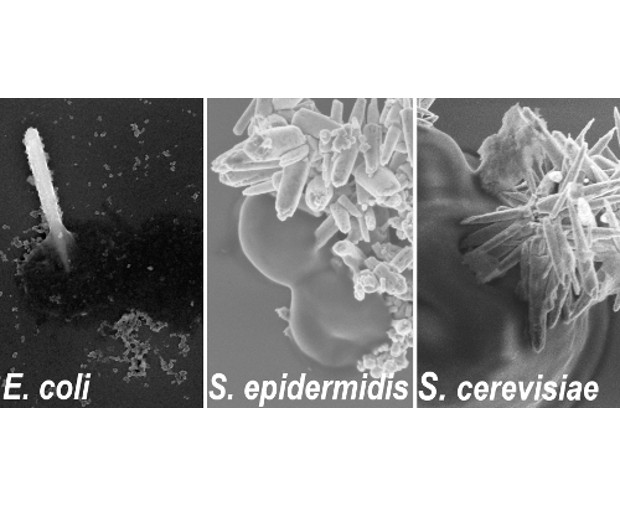
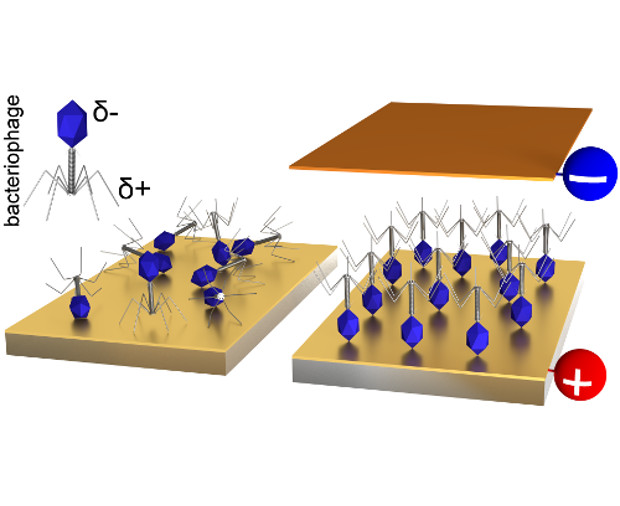
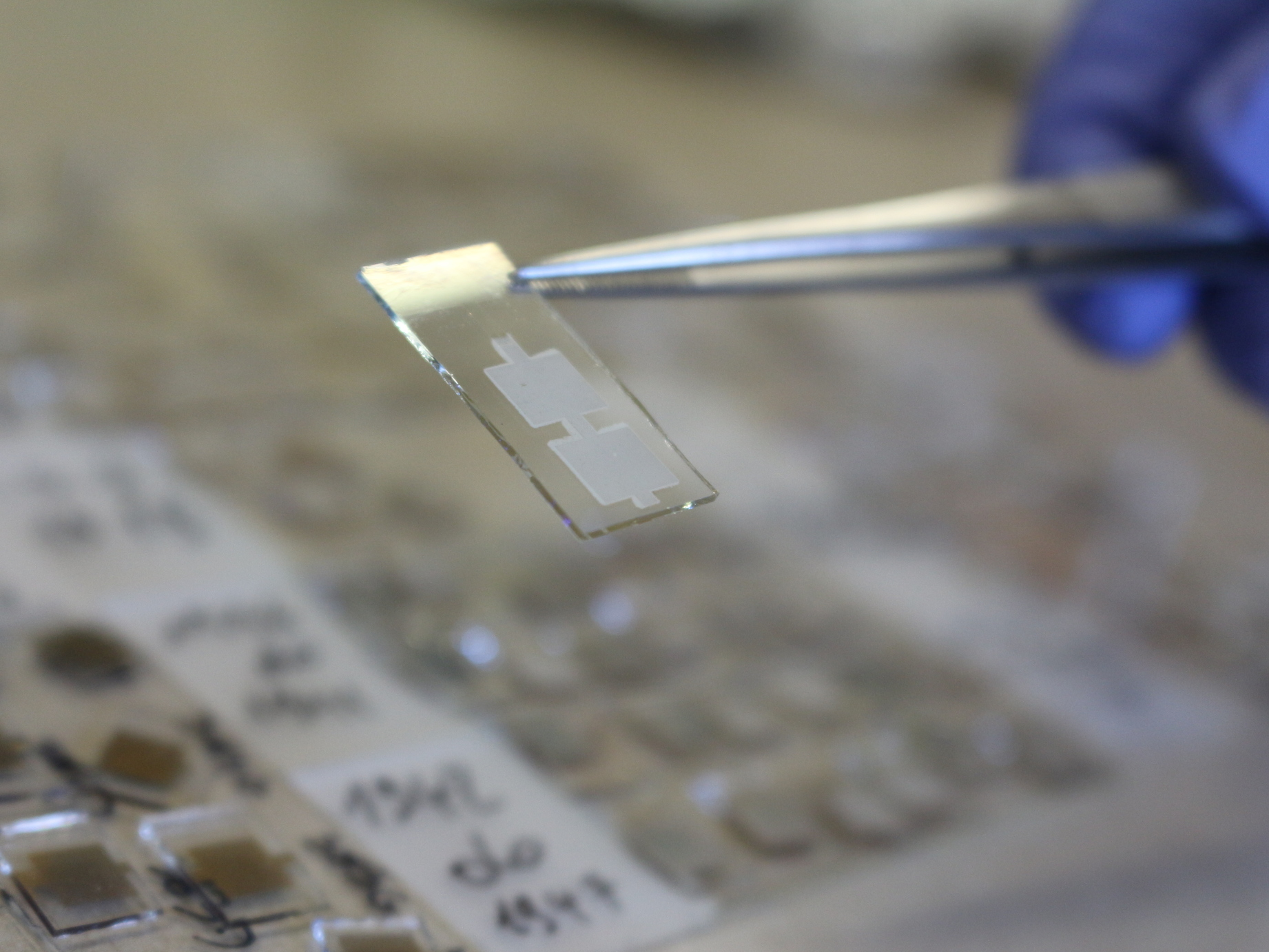

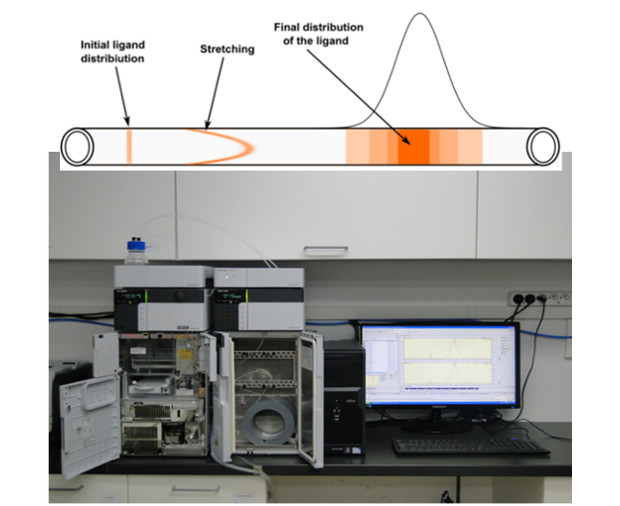


We have developed the phenomenological model of length-scale dependent viscosity of complex liquids (nanoviscosity).
The model applies to probe's diffusion in polymers, micellar solutions, hard-sphere and protein solutions.
It was aslo succesfullly appplied to description of diffusion in eukaryotic and prokaryotic living cells.
Read more...
Evaporation is ubiquitous in nature. It affects global climate and efficiency of car engines.
However despite 130 years of studies the process is far from being understood. Our reserach fill the gap and present practical solution to evaporation problem.
Read more...
Kinesin is a motor protein, responsible for transporting cargo across cells in our bodies. It can pull a load
with a force of several piconewtons. However, according to our findings, kinesin can be stopped by a
moderate increase the viscosity of its environment. The drag force when kinesin stalls is less than 0.001
piconewton – thousands of times less than expected!
Read more...
The inspiration to conduct our experiments was work by Ivanovaet al.
The authors described a mechanism of interaction of nananopillars present on the surface of cicada wings with bacterial cells.
Ivanova and co-workers showed that the bacteria are mechanically damaged by the movement of cicada wings and subsequent collisions with nanopillars.
We aimed to imitate such an phenomenon in the laboratory conditions.
Read more...
Rapid and reliable detection of pathogens is important due to many environmental and economic reasons.
Main goal of our research is development of biosensor based on ordered bacteriophages for fast and easy bacteria detection.
Proper orientation of bacteriophages prevents receptor binding proteins from being blocked.
For the purpose we utilized the electrostatic interactions upon application of electric potential to the surface on which phages are deposited.
Read more...
The aim of our research is producing stable, efficient and repetitive SERS ( Surface
Enhanced Raman Scattering ) platforms. This technique allows to detect chemical
compounds or even biological substances adsorbed on the metallic surface from very dilute
solutions thus it could be very useful e.g. in medical, forensics and industrial research. In the
project we develop a method of electrochemical deposition of metal nanoparticles, especially
silver and gold, on a surface by optimizing a lot of process parameters.
Read more...
7 Lorem ipsum dolor sit amet, sea ut scripta volutpat consequuntur, ea eos noster expetenda, putent aperiri sadipscing ex quo.
Purto utroque definitiones pro eu. Eruditi salutatus torquatos eu vis, nihil utinam ancillae eu sit, in partiendo concludaturque sea.
Mel eu timeam prompta, habemus petentium quo et.
Sea graeco appetere repudiandae at.
Nam unum convenire persequeris ea, mea te ferri quando.
Read more...
The aim of the project is developing a new analytical technique for measurements of the
association constant of different types of ligand-macromolecule complex. We are going to
shorten the time of analysis and decrease the amount of using substances. The project focuses
on research of interactions which are incredible important in medicine and pharmacology
industry (such as albumin-drug, DNA-ligand, ligand-virus). Moreover, computer simulations
of experiments will be done to estimate the impact of experimental parameters on results.
Read more...
The structural dynamics is usually subtle and difficult to probe by traditional ensemble experiments. We use fluorescence correlation spectroscopy (FCS) and fluorescence lifetime analysis to quantitatively study the structural transition of bovine serum albumin (BSA) in low concentrated cationic, anionic and nonionic surfactant solutions. Our results show structural pictures of BSA in different charged surfactant solutions by means of the hydrodynamic radius and fluorescence lifetime.
If there is anything unclear or unsuitable, just let me know.
Read more...
My research interest mainly lies in simulating the interaction between biomolecules
or the interaction between molecule and surface. We used molecular dynamics and
umbrella technique to calculate the interaction energy between lacI and DNA such as
free energy, electrostatic energy during the micro-dissociation process. We also used
molecular dynamics to calculate the interaction energy between paeonol and PDMS
surface such as vdW energy, electrostatic energy during the absorption process.
Read more...